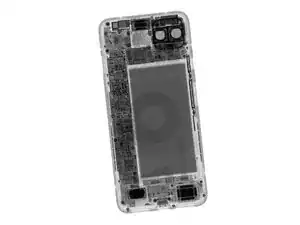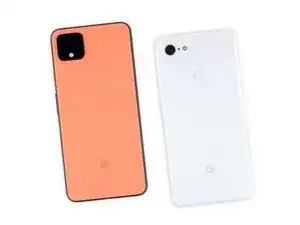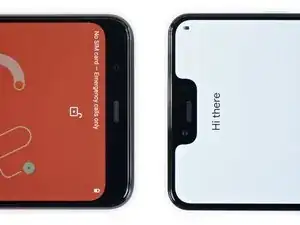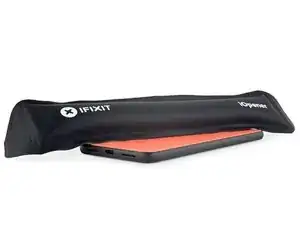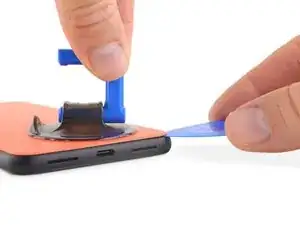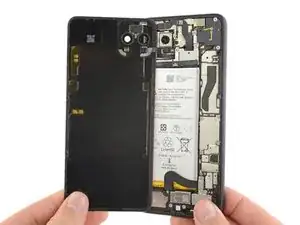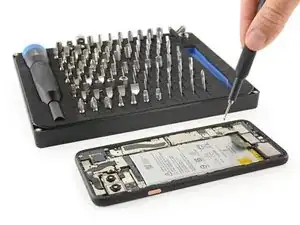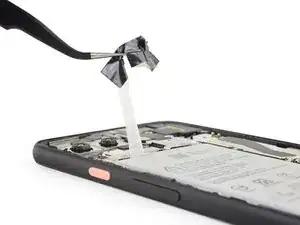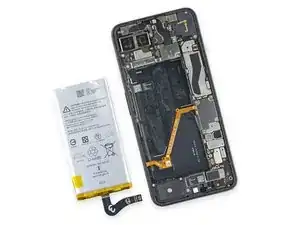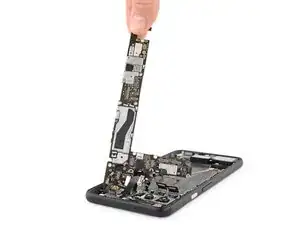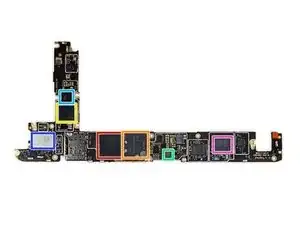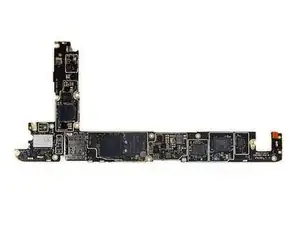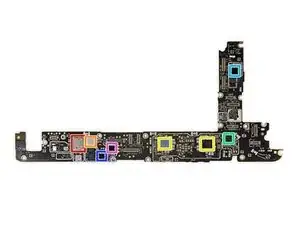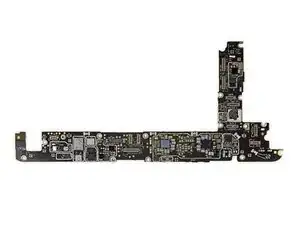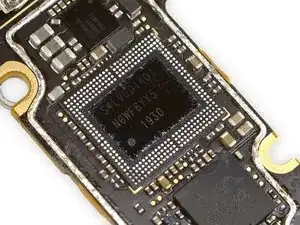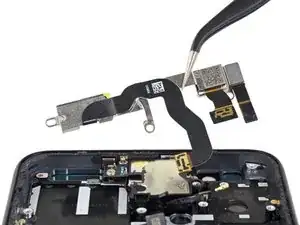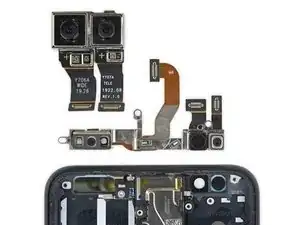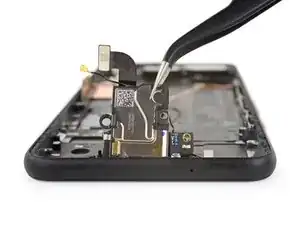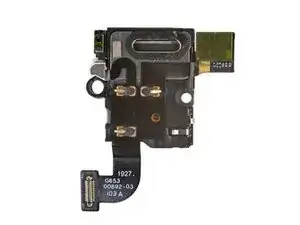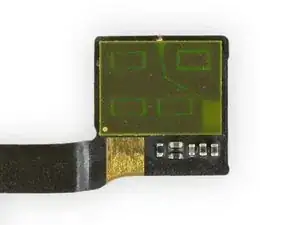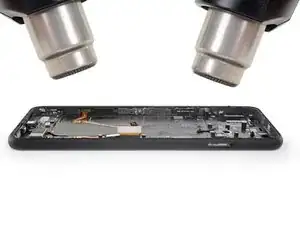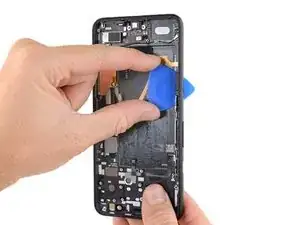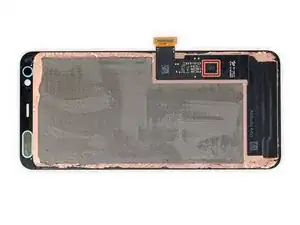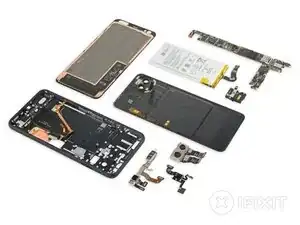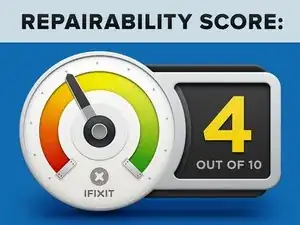Einleitung
Die Pixel Smartphones dieses Jahr waren so ungeheim, dass es, als sie bei der Keynote dann endlich vorgestellt wurden, nur kollektives Schulterzucken gab. Das Einzige, was nicht vorab schon bekannt war, ist, was eigentlich drin ist in diesen Phones. Das wollen wir jetzt ändern, und zwar mit einem Teardown.
Willst du noch mehr spannende Teardown News? Schau auf YouTube vorbei, folge uns auf Instagram, Twitter oder Facebook und abonniere unseren Newsletter.
Werkzeuge
-
-
Normalerweise ist eine hohe Auflösung das Größte für uns, aber dieser Teardown wird der wohl verPixelste, den wir wir je gemacht haben. Schau dir mal die technischen Daten unseres Teardown-Objekts an:
-
6.3" OLED Display mit einer QHD+ Auflösung von 3040 x 1440 (537 ppi) und einer variablen Bildwiederholungsfrequenz von bis zu 90 Hz.
-
Octa-core 64-bit Qualcomm Snapdragon 855 Prozessor, gepaart mit 6 GB LPDDR4X RAM
-
Dual Rückkameras mit einem 12.2 MP ƒ/1.7 Weitwinkelmodul, und einem 16 MP ƒ/2.4 Telefotomodul; eine einzelne 8 MP ƒ/2.0 Weitwinkel Selfiekamera
-
64 GB Speicherplatz (128 GB optional)
-
Schutzklasse IP68
-
Android 10
-
-
-
Wenn unser neues Oh So Orange Pixel 4 XL neben dem Clearly White 3 XL vom letzten Jahr liegt, fallen schon ein paar Dinge auf:
-
Die größten Änderungen sind der Verlust von einem der Lautsprechergitter auf der Vorderseite und des Fingerabdrucksensors von letztem Jahr. Die neue Anordnung der Lautsprecher macht immer noch Stereosound, aber der untere Lautsprecher ist jetzt (wie bei einem iPhone) nach unten gerichtet, nicht mehr nach vorne.
-
Der SIM Kartenhalter ist auch umgezogen, wahrscheinlich, um der neuen Ausrichtung der Lautsprecher Platz zu machen.
-
Aus dem Notch des Pixel 3 ist ein ganzer Rand geworden! Während alle anderen in der Industrie fieberhaft daran arbeiten, Ränder und Notches auszumerzen, sieht Google das ein wenig gelassener.
-
Zumindest haben sie den Platz gut genutzt: Im Rand liegt die Infrarot-Gesichtserkennung, die Weitwinkel-Frontkamera und ein cooles neues Radar-Dings.
-
-
-
Wenn im Lieferumfang eine Reparaturanleitung enthalten gewesen wäre, hätte der erste Schritt sicher gelautet "Erhitzen Sie die orange markierte Fläche." Also machen wir genau das.
-
Der darunterliegende Kleber ist zum Glück sehr dünn, aber trotzdem stark. Egal, solange es nur nicht der gleiche klebrige dicke Brocken ist wie im letzten Jahr.
-
Da der Fingerabdrucksensor weg ist, hatten wir gehofft, dass wir ohne Kabelstolperfallen reinkommen - aber leider verbindet ein neues, noch kürzeres Kabel die verschiedenen Teile der Rückkamera: Blitz, Mikrofon und Spektral- und Flickersensor.
-
Schön, dass die Spulen für kabelloses Laden und NFC - die neuerdings an die Rückseite geklebt sind - reparaturfreundliche Federkontakte haben.
-
-
-
Wir brauchen vielleicht nicht alle 112 Bits, um das Pixel auseinanderzunehmen, aber wir sind froh, dass wir diesmal das Manta Driver Kit dabei haben. Wir fischen den Torx 3 Bit raus und drehen mit den Schrauben ein paar Pirouetten.
-
Normalerweise lieben wir Klebestreifen mit Zuglaschen - sie sind viel besser bei Reparaturen als sonstige Klebestreifen und Kleber. Aber du musst sie in einem flachen Winkel ziehen, damit sie nicht reißen und das ist hier fast unmöglich.
-
Wie im Pixel 3 XL müsstest du das Motherboard rausnehmen, um den dafür benötigten Platz zu schaffen, was viel mehr Arbeit bedeutet.
-
Dank unserer Erfahrung können wir den Akku mit ein bisschen Lösungsmittel und ein wenig Druck ausbauen.
-
Darunter liegt eine kleine, aber gefährliche Landmine für zukünftige Reparateure: ein empfindliches Active Edge Kabel, dass nur darauf wartet, beim Ausbau des Akkus aus Versehen durchtrennt zu werden.
-
-
-
Wir müssen auf dem Weg zum Motherboard noch einige Halterungen und Abdeckungen hinter uns lassen, aber diese Chips sind es uns wert:
-
6 GB Micron LPDDR4X RAM, die auf dem Qualcomm Snapdragon 855 liegen.
-
SK hynix H28U72301CMR 64 GB Flash-Speicher
-
Samsung K4U4E3S4AF-HGCJ mysteriöse RAM mit einem großen aufgedruckten "P" - wir schätzen, das sind die RAM für den neuen Pixel Neural Core Chip, der wohl direkt darunter liegt.
-
Pixel H1C2M3 Titan M Sicherheitschip
-
Knowles 8508A Quad-Core Audio-Prozessor, ohne Zweifel hilft dieser bei den neuen Live-Untertitel und Transkriptions-Features.
-
Murata SS9709025
-
Avago AFEM-9106 (wohl ein Frontend-Modul)
-
-
-
Und auf der B-Seite dieser Platte:
-
Skyworks Sky5-8212-11 Frontend-Modul
-
Qualcomm QET5100 Envelope Tracker
-
Qualcomm PM8150 und PM8150A PMICs
-
STMicroelectronics ST54J NFC-Controller
-
Maxim MAX77826 Begleit-PMIC
-
XSPT6 SMC85201 Z
-
35L36CWZ BOCW1909
-
-
-
Wir werden dranbleiben und versuchen, das herauszufinden. Falls du mehr weißt als wir, schreibe uns in den Kommentaren!
-
Das Chip-Gehäuse hat folgende Kennzeichnung:
-
S4LV001A01 NGWF6YY5 1930
-
-
-
Wir nehmen beiden Hauptkameras raus, sie sind an der Hüfte zusammengewachsen. Die Kabel sind brav mit "wide" und "tele" beschriftet. Danke, Google.
-
Als nächstes kommen die nach vorne gerichteten Sensoren, einschließlich der 8 MP-Frontkamera, inklusive der 8 MP Kamera und der
Face IDGesichtserkennungssensoren. (Der Sensor für das Umgebungslicht bleibt erstmal am Display.) -
Die biometrische Hardware besteht aus zwei gut getrennten Nah-Infrarot(NIR)-Kameras , einem NIR Flutstrahler und einem NIR Punktprojektor.
-
-
-
Als nächstes lösen wir einen Haufen ... Zeug heraus, es stellt sich heraus, dass es sich um den Ohrhörer-Lautsprecher, das Mikrofon, den Umgebungslichtsensor und den Soli Chip handelt. Letzterer kann deine Gesten mit der Kraft von Radar erkennen.
-
Google nennt diese Implementierung seines hauseigenen Projekts Soli Motion Sense.
-
Obwohl die Radartechnologie schon lange im Einsatz ist und auf dem Papier ziemlich einfach aussieht, haben wir keine Ahnung, wie Google es geschafft hat, das ganze System in ein winziges, einfaches Rechteck ohne bewegliche Teile zu stopfen.
-
Der Soli Chip wertet die zurückgeworfenen Wellen dann aus und analysiert die Zeitverzögerung, die Verschiebung der Frequenzen und andere Dinge, um die die Eigenschaften des Objektes, das die Wellen zurückgeworfen hat, zu verstehen: Wie groß ist es, wie schnell bewegt es sich, in welche Richtung, usw.
-
Soli gleicht diese Daten dann mit der Datenbank bekannter Gesten ab, um herauszufinden, was - wenn überhaupt - das System jetzt machen soll.
-
Kurz gesagt: Das magische Rechteck kennt jede deiner Bewegungen.
-
-
-
Google hat diesem Pixel ein supergeschmeidiges (manchmal) 90 Hz Display verpasst - bisher wahrlich eine Rarität, selbst unter den premium-mäßigsten Smartphones.
-
Google hat auch dafür gesorgt, dass niemand dieses Display ohne Probleme ausbauen kann. Dämmstoffkleber + ein bis zum Rand reichender Bildschirm + eine riesige Gaffatapefläche = dieses Display kommt nicht unbeschadet raus.
-
Theoretisch gibts keinen Grund, das zu tun - man geht davon aus, dass man das Display nur dann ausbauen muss, wenn es sowieso schon kaputt ist - aber das kommt eben allzu häufig vor und in dem Fall macht das Ausbauen dann wirklich keinen Spaß.
-
Dann finden wir unerwartet noch einen Chipsatz von STMicro, wahrscheinlich der Touchscreen-Controller.
-
-
-
Die Konstruktion bleibt also hinsichtlich einer Reparatur (leider) sehr vertraut, aber ein paar Halloween-Schmankerl haben wir doch gefunden:
-
Der für Motion Sense zuständige Soli Chip sitzt neben dem Lautsprecher oben im Smartphone und ist - für seinen Funktionsumfang - unglaublich klein.
-
Wir glauben, dass der Pixel Neural Core unter ein paar extra dafür zuständigen RAM von Samsung sitzt. Heißt, der hat ganz schön zu tun.
-
Wir haben auch einen neuen Audio-Prozessor-Chip von Knowles gefunden, wohl einer der größten Player bei den Spracherkennungsfeatures des Smartphones.
-
Samsung hat das 90 Hz Display gebaut - sieht so aus, als ob das Pixel in dieser Hinsicht die Galaxy-Reihe geschlagen hat.
-
Aber zurück zu diesem allzu vertrauten Gefühl - wo steht das Smartphone auf unserer Reparierbarkeits-Skala?
-
-
-
Das Google Pixel 4 XL erhält 4 von 10 Punkten auf unserer Reparierbarkeits-Skala (10 ist am einfachsten zu reparieren)
-
Alle Schrauben sind Standard T3 Torx-Schrauben.
-
Die Klebestreifen mit Zuglasche, mit denen der Akku befestigt ist, sind zwar nicht narrensicher, aber reparaturfreundlich.
-
Die Maßnahmen gegen eindringendes Wasser macht eine Reparatur schwerer, aber hoffentlich auch unnötiger.
-
Eine Displayreparatur bleibt schwer, noch immer muss dafür das ganze Smartphone auseinander gebaut werden.
-
Jegliche Reparatur bedeutet, dass die extrem festgeklebte Rückseite abgenommen werden muss.
-
Glas auf der Vorder- und der Rückseite verdoppelt die Wahrscheinlichkeit eines Bruchs.
-
38 Kommentare
Any indication of why WiFi 6 is not supported despite being supported by the CPU? Is it missing a chipsets or antenna configuration that other WiFi 6 compatible phones have (that use the same Snapdragon 855 processor)?
Mikecant -
The Murata WIFI chip in Step 5 does not support WIFI 6.
Ugly, not repairable, 2016-like specifications on a 2019 smartphone? Will NEVER buy for $1000
How does the FCC even allow this?
Lol - chill out buddy. And why would the FCC have anything to do with allowing a product to be released / priced / etc.? Unless you’re referring to the use of the Soli radar bands…
Matt J -
Remember all those phones from 2016 with 90 Hz refresh rates, radar, face unlock, e-sim.
So does the Pixel Neural Core chip, in fact, lie directly below the Samsung K4U4E3S4AF-HGCJ mystery RAM in a POP config?
If it is indeed the Neural Core, then yes! It would be a POP config.


